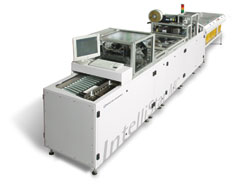The viewer perceives a photograph of a technical product or an operating step as a mapping of reality. The fact that taking and processing photographs involves innumerable conscious and unconscious decisions, which have the power to influence the communication with the reader, is often forgotten. Technical editors who are aware of this fact can improve the comprehensibility of photographs and thus, the instructions themselves.
The technical photograph or object/product photograph was long suppressed by line drawings. The visual “diet” consisting of lines, corners and edges was considered to be better for visual communication in a didactic sense, since it offered only the most essential elements to the eyes and the brain. Technical photography experienced a renaissance with the emergence of digital photography and the related digital image processing [1].
Analogous as well as digital photography undergo a multi stage design process before we catch the first glimpse:
- analogous photos – taking a picture, developing it, retouching, printing
- digital photo– taking a picture, photo-editing, printing
The photo designer takes decisions at each of these stages, which define the appearance of the end product. If we compare a technical photo from the 1930s in image 1 with a modern technical photo in image 2, we can ...
Read more after login
tekom members can log in directly with their "My tekom" access data.
You are not yet a tekom member, but would like to read one or more articles in full? Then you have the opportunity to register on the internet portal of the technical journal 'tcworld' without obligation. Once you have registered, you can select any three specialist articles and view them in full for a period of two months. The selection will then be deleted and you can select three new articles for the next two months.
As a tekom member you benefit from the following advantages::
- Online access to all articles of the trade magazine 'tcworld magazine'
- Exclusive specialist articles from all areas of technical communication
- Regular new articles from over 300 authors
- The technical journal 'tcworld magazine' as a printed edition
- Reduced admission prices to tekom conferences
- Membership fees for tekom publications
- Access to 'my tekom', the web forum with job offers / job requests, appointments, expert advice, service provider file and much more
Login
Registration
Promised: The trade magazine 'tcworld magazine' is the best we have. And we don't make the choice easy for ourselves. Every month, the editorial staff of the technical journal 'tcworld magazine' publishes the latest articles by renowned authors. This demanding selection is available exclusively to members of tekom (as usual, including the printed edition).
The trade magazine 'tcworld magazine' stands for intelligently prepared specialist articles, texts written to the point, informative content, surprising insights, international perspectives and communicates technical communication in an understandable, fast, clear and uncomplicated way - exclusively for you.

